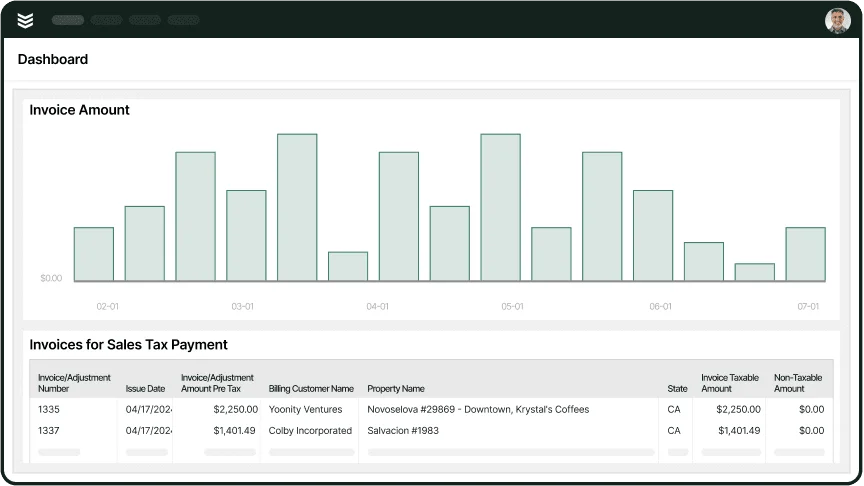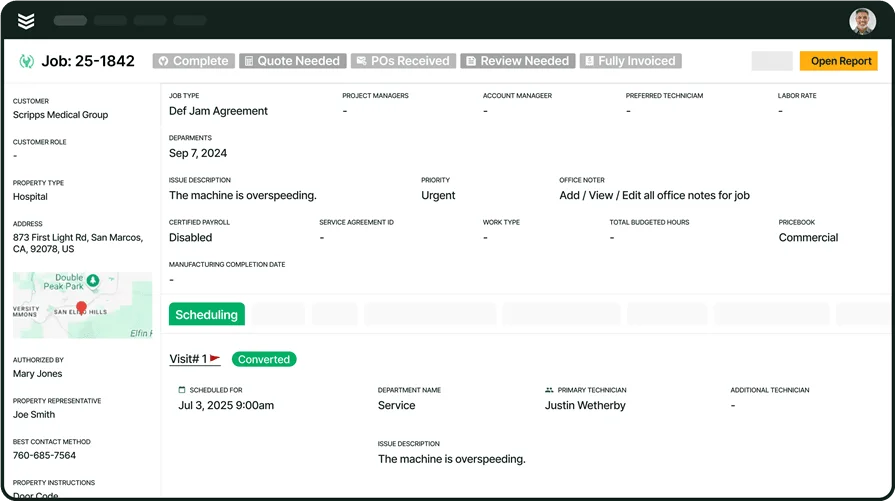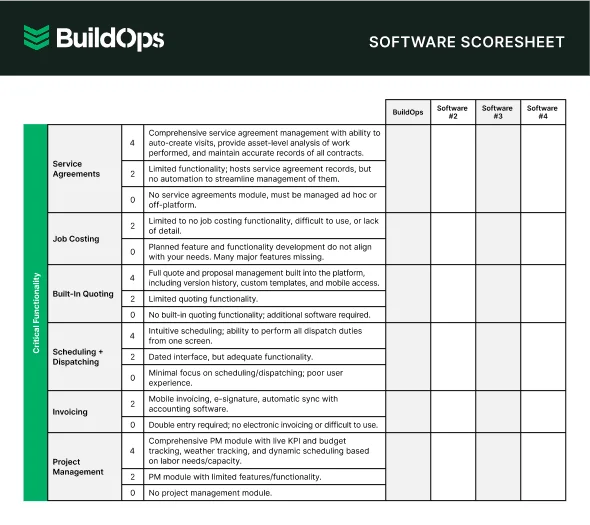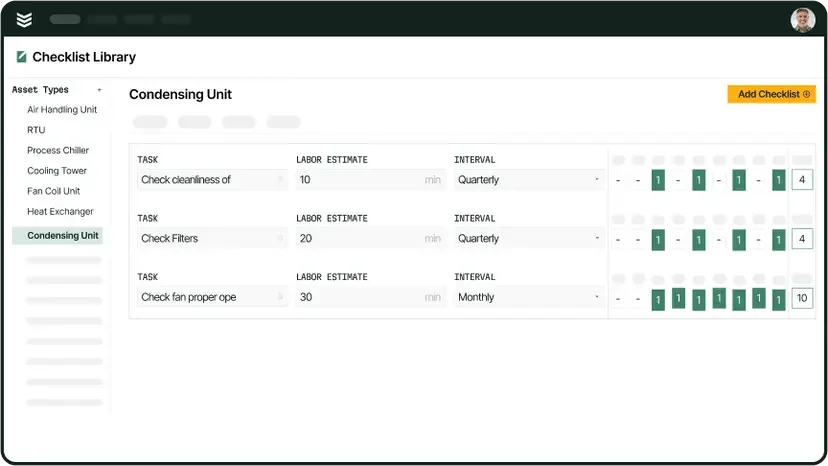Ever tried running a job site without solid reporting? It’s like driving blind. You’re guessing at progress, hunting down updates, and hoping crews filled out their dailies. In the construction industry, that kind of chaos slows everything down—and costs way more than just time.
Construction field reporting software changes the game. It gives project managers, supers, and field crews a fast, reliable way to track what’s happening on-site. From daily logs to safety reports, inspections to photos, you’ve got everything in one place—and accessible from anywhere.
This guide breaks down how to pick the best software for your team, which features actually move the needle, and the top tools worth checking out. Here’s what we’ll cover:
- Choosing the right field reporting software for your construction business
- 6 key features to look for in a construction field reporting software
- 8 best field reporting software for construction
- 7 benefits of using a construction field reporting software
- 4 important construction field reporting software FAQs answered
Before you pick a platform, you’ve got to know what your crew actually needs. Not every job site runs the same, and not every tool fits the way your team works. Let’s walk through how to choose a construction field reporting software that makes your day-to-day easier—not more complicated.
Choosing the right field reporting software for your construction business
Before jumping into pricing or platforms, it’s worth asking a few key questions. Your crews are juggling real work in tough conditions—your reporting tool should help them, not slow them down. Here’s where to start:
- Jobsite reporting needs: What types of reports do your projects require—daily logs, safety audits, material tracking, or punch lists? Will the software cover those without needing workarounds?
- Field crew adoption: Will superintendents and foremen actually use it in the field? Is it mobile-friendly, simple to learn, and fast to fill out under pressure?
- Office-to-field visibility: Can PMs and execs see real-time updates from the jobsite without chasing down reports? How quickly does the software sync between field and office?
- System compatibility: Will it integrate with your project management tools, accounting system, or ERP? Or will your team have to double-handle data?
- Features: Does it support photos, voice notes, custom checklists, digital signatures, or offline reporting? What tools are built to handle the chaos of a live jobsite?
Now that you’ve nailed down what matters on your jobsites, it’s time to look under the hood. Not every tool brings the same firepower—and some features can make or break your team’s day in the field.
6 key features to look for in a construction field reporting software
Keeping tabs on a project shouldn’t feel like detective work. But for a lot of construction teams, daily reporting still lives in notebooks, text threads, or spreadsheets. And when it’s time to report back to the office? That’s when things slip through the cracks. Field service reports should close that gap between what’s happening in the field and what leadership sees on the backend.
It needs to be mobile, reliable, and flexible—because your crews are working in fast-moving, unpredictable environments. Here are the six features that actually move the needle for construction contractors:
1. Mobile reporting app built for the field
Crews don’t sit behind a desk. They’re working on rooftops, under slabs, or in the middle of a noisy jobsite. A reporting tool has to meet them where they are—with a construction field service mobile app that lets them fill out reports, snap photos, tag issues, and send updates in real-time.
Let’s say your concrete crew wraps up the second pour ahead of schedule, and the foreman logs the daily report while still on-site—with site photos and weather notes included. That info is sent back immediately, so the office can verify and release the next phase. Tools with mobile capabilities make that kind of construction field reporting second nature.
2. Real-time scheduling and project updates
Construction projects live and die by the schedule. Any reporting tool worth using should feed into your job scheduling system. That way, missed inspections, weather delays, or safety issues logged in the field can immediately trigger schedule adjustments—without phone tag.
Picture this: A roofing sub logs a weather delay report just after lunch. The office gets pinged, reschedules follow-up work for the next clear day, and updates the subcontractor automatically. That level of responsiveness starts with proper construction field report software tied to real-time scheduling.
3. Dispatch insights connected to field reporting
Field reporting shouldn’t exist in a vacuum. The same system should help your dispatch team respond quickly when something changes—like re-routing crews, adding service calls, or pulling someone off a job due to a safety issue logged in real time.
Here’s a scenario: A foreman flags a hydraulic issue on a lift in their report. Dispatch sees it immediately, reroutes a technician already in the area, and the fix is made before it sidelines the day’s plan. That’s the kind of response you get when your construction field report software is integrated with field service dispatch tools.
4. Quoting that adjusts to what’s reported in the field
Sometimes the scope changes mid-job—and if your team reports it, quoting should respond fast. Whether it’s extra excavation hours or unforeseen material needs, your software should help create, adjust, and send quotes straight from the data your techs report.
For instance, your site lead notes in a daily report that a foundation wall needed to be re-poured due to soil instability. With just a few clicks, that data feeds into the quoting tool, generates a revised estimate, and sends it to the client. It’s possible when your construction field report software connects directly to your quoting system for contractors.
5. Fleet status tied to job reports
Your team can’t report on the job if they can’t get there. The vehicles that carry your crews and tools need to be visible—especially when delays or damage get logged in daily reports. A smart system lets you connect field insights to fleet readiness without guesswork.
Say a field report flags a broken tool left in the truck. With the right platform, fleet managers get that update immediately, see where the vehicle is, and pull it out of rotation before tomorrow’s dispatch. That kind of awareness is only possible with construction fleet management software that tracks their status and location.
6. Invoicing and payments triggered by completed reports
If reports drive billing, the two need to live in the same system. When a tech finishes the work and logs the final report, invoicing should follow immediately—no more chasing paper or cross-referencing spreadsheets.
Let’s say your electrical crew wraps a panel install and submits their completion report with photos and sign-off. That kicks off an invoice that gets sent within minutes, not days. It helps speed up cash flow, and it’s made possible with construction field report software for invoicing and payments.

Explore our reporting product
Turn every field into a report—enabling you to get powerful insights that help.
Other valuable construction field report software
Beyond the core tools, certain add-ons can bring deeper visibility, automation, and structure to how reporting fits into the bigger picture of your operation.
- Pipeline visibility: A pipeline management feature lets contractors monitor upcoming bids, scheduled projects, and delayed tasks in one place. When paired with construction field report software, it helps identify gaps before they affect the schedule or budget.
- Service agreement tracking: Tools that connect service contracts to reporting make it easier to monitor maintenance schedules, warranty claims, and SLA compliance. This connection between construction field software and service agreements ensures nothing slips through the cracks.
- Integrated time tracking: Reporting platforms that include built-in time tracking reduce manual entry, support labor audits, and give better insight into how field hours tie into job progress. With field reporting software linked to time tracking, contractors can track hours with confidence and accuracy.
Before jumping into specific platforms, it’s worth recognizing that not all reporting software is created equal. Some are built for general use, while others are designed specifically for the fast pace and complexity of construction fieldwork. Knowing which tools match your jobsite needs makes all the difference when it comes to real-time reporting, crew accountability, and project oversight.
8 best field reporting software for construction
There’s no shortage of reporting tools out there. But when it comes to field-heavy work like construction, most fall short. You need something purpose-built for crews moving fast, jobsites that change daily, and managers who need data before the day’s over—not after the week ends. Here’s a breakdown of the top options, who they’re great for, and why some might not be the best fit for your crew.
1. Best field reporting software for commercial contractors: BuildOps
BuildOps was designed specifically for commercial contractors handling complex jobs, large teams, and multi-trade operations. It brings together jobsite reporting, scheduling, quoting, CRM, time tracking, and fleet tools in one unified platform. Daily reports can include photos, voice-to-text notes, time logs, and safety checklists—all synced live from the field. Office teams get immediate visibility, while foremen and techs log reports without bouncing between apps.
It’s not just about logging tasks—it’s about giving your teams the data they need to keep projects moving, reduce callbacks, and make faster decisions. Unlike generic tools, BuildOps adapts to commercial workflows where accountability, speed, and compliance are non-negotiable.
How Pricing Works: BuildOps offers tailored pricing based on user count, trades, and operational needs. Packages are scoped to fit small commercial outfits up to enterprise-scale service firms.
What Sets It Apart for Commercial Contractors: It supports multi-layered job reporting, real-time syncing across roles, and integrates reporting into broader workflows like invoicing, quotes, and asset tracking—all built for how commercial contractors operate.

Check out BuildOps reporting
Our construction field reporting tool is purpose-built for commercial contractors.
2. Best for residential construction: Housecall Pro
Image Source: Housecall Pro
Housecall Pro is tailored for residential contractors handling smaller-scale service jobs like HVAC, plumbing, or electrical. The platform covers basics like job scheduling, simple customer communication, and lightweight field reporting through mobile apps. It’s clean, intuitive, and quick to adopt for small teams that don’t need deep customization or layers of workflow complexity.
However, Housecall Pro may not be ideal for contractors running large commercial projects or those who need multi-crew coordination, detailed compliance tracking, or jobsite-specific reporting formats.
How Pricing Works: Plans start at around $65/month per user. Tiered pricing varies based on feature access, team size, and add-ons.
What Sets It Apart for Residential Construction: Easy onboarding, automated customer reminders, and built-in payment tools make it a solid fit for residential service businesses with high job volume and short turnaround times.
3. Best for general contractors: Jobber
Image Source: Jobber
Jobber focuses on helping general contractors manage client communication, job scheduling, and basic task tracking. It provides a mobile-friendly interface, automated invoicing, and templates for recurring tasks—making it especially helpful for crews that handle a broad range of job types. Reporting is simple and visual, allowing field staff to log notes, job statuses, and progress updates with ease.
That said, Jobber may fall short for teams needing detailed daily field reporting, multi-trade coordination, or enterprise-level job tracking across large teams.
How Pricing Works: Starts around $49/month, with higher tiers offering custom quoting, batch invoicing, and advanced automations.
What Sets It Apart for General Contractors: Generalists benefit from Jobber’s flexibility, ease of use, and quick setup—ideal for contractors juggling multiple short-term projects.
4. Best for small to mid-sized construction businesses: Fieldwire
Image Source: Fieldwire
Fieldwire is built for coordination between field and office teams, with strong tools for task management, punch list tracking, and document sharing. It offers site-based reporting and progress photos, helping teams stay aligned during each project phase. The software is especially useful for small to mid-sized contractors managing multiple subs or trades across a few active jobsites.
However, it may not scale well for companies with highly complex reporting requirements, large-scale multi-region projects, or those needing deeper financial integration.
How Pricing Works: Offers a free plan with limited functionality; paid plans start at around $39/user/month. Enterprise pricing available for larger needs.
What Sets It Apart for Small to Mid-Sized Contractors: Strong task-based workflows, easy mobile use, and solid field documentation tools make Fieldwire a practical upgrade from pen-and-paper or spreadsheet systems.
5. Best for analytics and financial reporting: Insight Software
Image Source: InsightSoftware
InsightSoftware is known for its strength in data and financial analytics. For construction teams, it helps consolidate data from job costing, field reports, accounting systems, and project controls to generate advanced dashboards and reporting summaries. It’s ideal for financial leaders and operations managers who need to compare performance across projects, identify inefficiencies, and report to stakeholders with clarity.
That said, InsightSoftware is heavily geared toward back-office analysis and may not offer the in-field usability or mobile-first tools required by foremen and techs entering data directly from the jobsite.
How Pricing Works: Pricing is custom and typically designed for enterprise use. Integrations and reporting modules may affect total cost.
What Sets It Apart for Analytics-Driven Contractors: Offers deep financial reporting, powerful visual dashboards, and integration with ERPs for companies prioritizing fiscal insight and KPI tracking.
6. Best for enterprise contractors and large-scale projects: Procore
Image Source: Procore
Procore is an enterprise-grade construction management platform built to handle everything from RFIs and submittals to job costing and reporting. Its field reporting tools allow teams to capture daily logs, safety incidents, manpower counts, and progress photos—all synced to a centralized project dashboard. Procore excels at helping large contractors standardize processes across many crews and job sites.
However, smaller contractors or businesses looking for simpler tools may find Procore’s learning curve, cost, and implementation timeline too steep.
How Pricing Works: Enterprise pricing only; quotes are based on company size and scope. Implementation services are often required.
What Sets It Apart for Enterprise Construction: Unmatched integration across all phases of the build—from precon through closeout—paired with scalable reporting across thousands of users.
7. Best for daily logs and field-first reporting: Raken
Image Source: Raken
Raken is built for daily reporting and field documentation. Its mobile app lets crews log daily reports, attach photos, submit time cards, and record voice notes—making it a go-to for superintendents and foremen. It also includes safety and quality checklists, making compliance tracking easier for field teams.
That said, Raken focuses narrowly on reporting and may lack broader project management or service features that multi-trade contractors often need.
How Pricing Works: Starts at approximately $18/user/month, with additional features like time tracking and toolbox talks in higher tiers.
What Sets It Apart for Field-First Contractors: Designed for speed and simplicity in the field, Raken removes barriers to consistent daily logging—ideal for teams that need clean reports without heavy software overhead.
8. Best for owner-focused reporting and client collaboration: ProjectTeam
Image Source: ProjectTeam
ProjectTeam is structured around owner-client collaboration, offering extensive document control, customizable forms, and shared access to daily reports and RFIs. It’s ideal for projects where the owner or client is deeply involved in approvals, updates, or review workflows. Field reports can be tailored per stakeholder, and the platform supports multiple project roles and permission levels.
That said, contractors looking for mobile-first field usage or trade-specific workflows may find it too client-facing and less optimized for field operations.
How Pricing Works: Subscription-based pricing available with per-user plans; additional features may require enterprise licensing.
What Sets It Apart for Owner-Driven Projects: Designed to streamline communication, documentation, and transparency between contractors and clients during high-visibility builds.

Get the right fit for your crew
Compare leading tools at a glance with this easy-to-use software scoresheet.
7 benefits of using a construction field reporting software
Construction sites move fast—and decisions are only as good as the information behind them. With a construction field report software in place, contractors gain the ability to track what's really happening in the field, spot problems early, and connect data from boots-on-the-ground teams to office leadership. The benefits ripple out across productivity, communication, and job profitability.
1. Better accountability from field teams
Crews on site move fast—pouring concrete, hanging steel, solving problems on the fly. When reporting is easy and expected, every foreman and tech knows their work is being logged and reviewed. That visibility holds teams accountable for time, safety, and progress without micromanagement. Field reports act as receipts for productivity—and help leadership separate real issues from noise.
2. Faster turnaround for change orders and RFIs
Time kills margin. Delays waiting for approvals or documentation slow everything down. Field report software ensures changes, roadblocks, or missing details get flagged early. PMs can turn around RFIs or change orders with confidence because they’ve got clear, documented input straight from the jobsite. That speed is the difference between a profitable change and a blown schedule.
3. Stronger coordination between field and office
Construction falls apart when teams aren’t aligned. When foremen are using texts and whiteboards and the office is buried in spreadsheets, decisions take too long—or get made with the wrong info. Real-time reporting closes the loop. The field sends updates, the office sees issues, dispatch shifts accordingly. It’s the kind of coordination construction field service management software was made to support.
4. Smoother handoffs from one crew to the next
Trades depend on one another—framing waits on slab, electrical waits on framing, and so on. When reporting is clean, the next crew knows what’s been done, what’s still in progress, and what to watch for. Whether it’s between shifts, subs, or phases, construction field reporting software helps crews hit the ground running instead of wasting time backtracking.
5. Cleaner invoicing with supporting job data
Invoice delays are a cash flow killer. Field reporting software ties job progress, time logs, and material usage directly to your billing process. When every task and hour has a digital paper trail, your back office has what it needs to send complete, defensible invoices. No more chasing down crew leads for missing info. This is where construction invoice software shines—getting bills out faster and with fewer disputes.
6. More reliable job costing and forecasting
Without field-level reporting, cost forecasting is guesswork. You need to know how much labor, time, and material each task really takes—not what was planned on paper. When crews consistently report field data, estimators can sharpen their numbers and ops leads can spot overages before they snowball. As highlighted in this construction insights report, accurate data from the field leads directly to stronger project financials.
7. Centralized job history for warranty, inspection, and closeout
Jobs don’t end when the work’s done. You’ve got inspections, punch lists, and warranty calls months down the line. With construction field reporting software, every photo, comment, and checklist is stored and searchable by job. That means fewer fire drills when clients call with questions, and faster closeouts when it’s time to hand off. Construction contractor CRM tools that link reporting with contact and project history make this even easier.
4 important construction field reporting software FAQs answered
When you’re running field crews and juggling active jobsites, you don’t have time to guess whether a software solution is worth it—or if it even fits the way you operate. These FAQs break down what construction field reporting software really is, who needs it, and what to know before bringing it into your operation.
1. What is construction field reporting software?
Construction field reporting software is a digital tool that allows construction crews to efficiently log, track, and share real-time jobsite updates—such as daily reports, timecards, photos, safety checklists, and notes—between the field and the office, using mobile apps or web platforms.
It replaces traditional paper logs and scattered text/email updates with a centralized system, making it easier for project managers, supers, and owners to see what's happening on-site each day. These platforms support everything from compliance and inspections to labor tracking, streamlining how information flows across a job.
2. Is field service reporting software worth the cost for construction contractors?
Yes—especially for contractors managing multiple crews, remote job sites, or projects with complex reporting needs. Field service reporting software reduces rework, shortens billing cycles, speeds up approvals, and improves visibility from the field to the office. For companies still relying on spreadsheets, text messages, or paper dailies, the time and money saved from better coordination and fewer mistakes often outweighs the cost of the software in just a few months.
If you're just starting out or not ready to commit to software, using templates is a practical first step. A well-designed field service report template can help standardize jobsite documentation, keep teams consistent, and lay the groundwork for smoother reporting workflows down the line.
3. Are there applicable regulations to follow when implementing a field reporting software for enterprise?
Yes—but they vary depending on the type of work you do and who you’re doing it for. In construction, the main concern isn’t the software itself—it’s how you use it to meet reporting requirements tied to safety, labor, and documentation. Here are a few key areas to be aware of:
- OSHA jobsite reporting: Safety incidents, near-misses, and inspection logs often need to be documented daily. Your field reporting process—whether digital or not—must support accurate, up-to-date records in case of audits or claims.
- Certified payroll: On federally funded or prevailing wage jobs, contractors are required to track and report labor hours, job classifications, and wage compliance. Field report software should help collect time and work logs that align with certified payroll submissions.
- Contract-driven documentation: Many private and public projects require daily reports, weather logs, manpower tracking, and photo documentation. These aren't federal laws—but they’re built into contract scopes, especially in commercial and government work.
- Retention requirements: Clients, GCs, and regulatory agencies often expect contractors to keep field records for several years. Your software should allow easy access and export of old reports, should disputes or reviews come up later.
Bottom line: the software doesn’t need to be certified—but it does need to help you meet jobsite documentation standards. Before you roll anything out, make sure your field reporting process lines up with project-specific requirements and regional labor rules.
4. What types of construction businesses need field reporting software?
Field report software benefits nearly every construction operation—but it becomes essential for companies juggling people, processes, and paperwork across multiple jobs. Contractors who benefit most include:
- Commercial contractors managing multi-trade crews and multi-phase builds
- Specialty subcontractors like electrical, plumbing, and HVAC, who need detailed field updates tied to job progress
- Service contractors providing scheduled maintenance or on-demand repairs with field teams
- General contractors coordinating between owners, subs, inspectors, and architects
- Enterprise construction firms needing compliance, documentation, and integrated workflows at scale
Whether you're tracking crew hours, logging safety inspections, or pushing updates to the office in real-time, field reporting software brings structure and visibility to the chaos of the jobsite.
If you’re in construction, you already know that keeping crews aligned, projects on track, and data flowing from the field to the office is no small task. Field reporting software doesn’t just make that easier—it makes it possible. From jobsite documentation to billing and forecasting, the tools you choose affect how fast your team moves and how clearly you see the work getting done.
The challenge? Most tools only do part of the job. You’ll find reporting in one system, scheduling in another, and time tracking somewhere else—if it’s even included at all. That’s where BuildOps stands out. For commercial contractors who need full visibility into their operation, BuildOps brings everything together in one platform built specifically for field service. The features listed throughout this guide aren’t standard in most platforms—but they’re all included in BuildOps.

Curious how BuildOps works?
Take a closer look at how we help teams run faster, more profitable operations.








